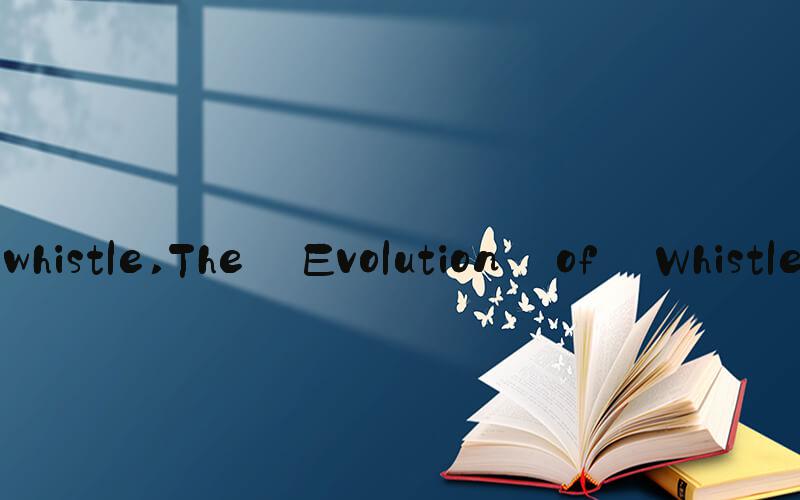AI答案
 Whistle: A Brief Introduction
Whistle: A Brief IntroductionWhistle, an air-driven musical instrument, has fascinated people for centuries. It is a small cylindrical tube made of various materials, including metal, wood, plastic, and ceramic. Players blow air through a mouthpiece and manipulate the instrument's holes with their fingers to create different notes.
The Evolution of WhistleWhistles have been around for thousands of years, with ancient civilizations using them for communication and signaling. The first documented use of a whistle as a musical instrument dates back to the Bronze Age, around 4,000 years ago, in China. During the 19th century, whistles gained popularity as a signal device on steam locomotives and in the military. Today, whistles are still used as a communication tool in sports, emergency situations, and policing.
The Science of Whistle SoundThe sound produced by a whistle is determined by several factors, including the material, shape, size, and the position and shape of the holes. The air that passes through the whistle causes the internal air pressure to decrease, causing the sound waves to emanate from the instrument. The wavelength and frequency of the sound produced by the whistle depend on the length of the air column enclosed within the instrument and the constriction of the air passage by the player's lips or tongue.
The Different Types of WhistlesThere are several types of whistles, each with unique characteristics and uses. Some common types of whistles include the penny whistle, tin whistle, slide whistle, police whistle, and bird whistle. The penny whistle, also referred to as the tin whistle, is a small, simple whistle often used in Celtic music. The slide whistle, also known as the piston whistle, creates a glissando effect by changing the length of the air column. The police whistle is a high-pitched, loud whistle used for signaling and as a warning device. The bird whistle imitates the chirping or tweeting sounds of birds and is often used in traditional folk music.
The Role of Whistle in MusicThe whistle has played a significant role in various musical genres, from traditional folk music to contemporary pop and rock music. In Celtic music, the penny whistle is commonly used to play jigs, reels, and ballads. The blues and jazz genres also use the whistle as a solo instrument, with musicians like Sonny Terry and John Mayall pioneering the use of blues harmonica, which is technically a type of mouth-blown free-reed instrument similar to a whistle. In rock music, the whistle is occasionally used as a texture or accent, such as in Led Zeppelin's iconic song, "Whole Lotta Love."
The Psychological Benefits of WhistlingWhistling has been linked to several psychological benefits, including stress relief, improved mood, and increased focus. The act of whistling encourages deep breathing, which can help reduce stress and anxiety. It can also elevate mood by releasing endorphins and boost concentration and productivity by providing a rhythmic background sound. Additionally, whistling can bring a sense of community, as it is often a shared activity among friends and family.
The Future of WhistleAs technology advances, it is possible to create digital whistles using sensors and software. These digital whistles can produce a wider range of sounds and effects than traditional whistles. For example, a digital whistle could imitate different animal sounds, create echo effects, and even harmonize with other digitally generated sounds. However, the traditional acoustic whistle remains a beloved instrument, and it will likely continue to be used for communication, signaling, and music for generations to come.
